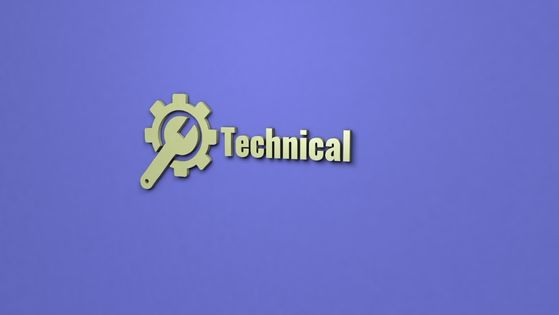Search Engine Optimization (SEO) is an essential aspect of digital marketing that aims to improve the visibility and ranking of a website in search engine results pages (SERPs). Technical SEO services are a critical component of this process, as they involve optimizing the technical aspects of a website to improve its performance and user experience. In this article, we will explore the various aspects of technical SEO services, including website speed optimization, mobile responsiveness, and site structure.

Our Technical SEO services
Website Speed Optimization
Website speed optimization is a crucial aspect of technical SEO, as it directly impacts user experience and search engine ranking. A slow-loading website can lead to high bounce rates, low engagement, and decreased conversions. To optimize website speed, SEO professionals can utilize a variety of techniques, including:
Compressing Images
Images are an essential component of web design, but they can also be a major contributor to slow page load times. To optimize image loading speeds, it is essential to compress them using tools like Photoshop or online compression tools like TinyPNG or JPEGmini.
Minifying Code
Minifying code involves removing any unnecessary spaces, characters, or code from the HTML, CSS, and JavaScript files on a website. This can significantly reduce page load times and improve overall website performance.
Utilizing Browser Caching
Browser caching is a technique that stores frequently accessed data, such as images and CSS files, on the user’s browser. This reduces the need for the browser to download the same data every time the user visits the website, resulting in faster page load times.
Mobile Responsiveness
With the majority of internet users accessing the web through mobile devices, mobile responsiveness is a crucial aspect of technical SEO. Mobile responsiveness refers to how well a website performs on mobile devices, including smartphones and tablets. To optimize mobile responsiveness, SEO professionals can utilize the following techniques:
Responsive Design
Responsive design involves designing a website to automatically adjust its layout and content to fit different screen sizes and resolutions. This ensures that the website is easily accessible and readable on any device.
Optimizing Images
Images are often a major contributor to slow loading times on mobile devices. To optimize images for mobile devices, SEO professionals can use tools like responsive images, which automatically resize and compress images based on the device being used.
Simplifying Navigation
Mobile users have limited screen space, which means that website navigation must be simple and easy to use. To optimize mobile navigation, SEO professionals can utilize drop-down menus, hamburger menus, and other navigation techniques that are easy to use on mobile devices.
Site Structure
Site structure refers to the organization and layout of a website. A clear and logical site structure makes it easier for users to navigate the website and find the information they are looking for. Additionally, it helps search engines understand the content hierarchy and importance of pages on the website. To optimize site structure, SEO professionals can utilize the following techniques:
Creating a Site Map
A site map is a blueprint of a website that outlines the structure, hierarchy, and organization of its pages. This makes it easier for search engines to crawl and index the website, improving its visibility in search engine results pages.
Using Descriptive URLs
Descriptive URLs make it easier for users to understand the content of a page before they click on it. Additionally, they provide search engines with valuable information about the content of the page, improving its visibility in search engine results pages.
Utilizing Internal Linking
Internal linking refers to the process of linking to other pages on the same website. This helps to establish a hierarchy of content and provides users with additional resources and information related to the topic at hand. Additionally, internal linking helps search engines understand the structure and importance of content on a website.
Security
Website security is another critical aspect of technical SEO. A website that is not secure is vulnerable to attacks, data breaches. And other security issues that can damage its reputation and visibility in search engine results pages. To optimize website security, SEO professionals can utilize the following techniques:
Installing SSL Certificates
SSL certificates provide an extra layer of security by encrypting data transmitted between the user’s browser and the website’s server. This not only protects sensitive user information but also improves the website’s search engine ranking, as Google now considers SSL as a ranking factor.
Regularly Updating Software
Keeping website software up to date is essential to maintain website security. Updates often contain security patches that address vulnerabilities and protect against attacks.
Using Strong Passwords
Strong passwords are essential to protect against brute force attacks, where hackers use automated tools to guess passwords. SEO professionals can enforce strong password policies and use tools like two-factor authentication to add an extra layer of security.
Conclusion
In conclusion, technical SEO services are a critical aspect of any successful SEO strategy. By optimizing the technical aspects of a website, businesses can improve website speed, mobile responsiveness, site structure, security, and more. This not only improves user experience but also helps search engines understand and rank website content better. By working with SEO professionals who specialize in technical SEO, businesses can ensure that their website is fully optimized for visibility and performance in search engine results pages.
